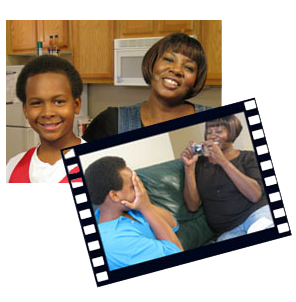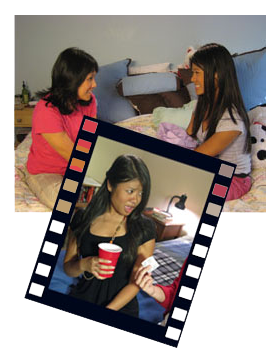Teens learn how to negotiate in the world by learning how to get along with their family members first. Cooperation, communication, mutual respect, and nonviolent problem-solving are valuable skills that can be honed on a daily basis at home. A hallmark of Active Parenting programs is the warm and humorous video vignettes, used to illustrate these common family problems—and solutions. Each session of Teens in Action contains plenty of video to bring key points to life. Your program kit contains 124 minutes of video. The families portrayed in the video are:
The Shelton Family

The Shelton family are growing into the adolescence of Matt and Abby. For example, Matt and his dad have different ideas about appropriate use of the Internet. Abby and her mother are having trouble communicating.
The Easley Family

Jada is the only child in the Easley family. Jada has struggled with depression in the past and worries about meeting her father’s high expectations. She and her parents have different ideas about cooperation—sometimes her parents call her a “princess,” but she disagrees!
The Russell Family

Mrs. Russell is raising her son Derrick without the assistance of Derrick’s dad. Her brother Al pitches in. Derrick wants to find a way to gain more independence, starting with his protective mom.
The Mendez Family

Teens Alex and his younger sister Miranda are part of the Mendez family. Alex is rebellious and was recently caught sneaking out of the house and drinking alcohol. He and the rest of the family are learning important lessons about balancing a teen’s natural desire to take risks with the importance of preventing problems and earning trust.
The Kwan Family

Julie’s boyfriend is pressuring her to move faster in their relationship than she is comfortable. She wants to talk about it with her mother, but she’s worried about Mrs. Kwan’s reaction.
The Bryant Family

The Bryants are a blended family. Justin and Erin are step-siblings of the same age. The typical problems of adolescence are compounded by the challenges of creating a new family, including learning how to respect privacy and settle arguments. Susan, Justin’s mother, also makes an appearance.
Your narrators, Alicia and Connor
The kids in your class will relate to narrators Alicia and Connor, who are in their 20s and remember what it was like being a teen! They have fun as they guide viewers through engaging video scenes of teens and their parents.

